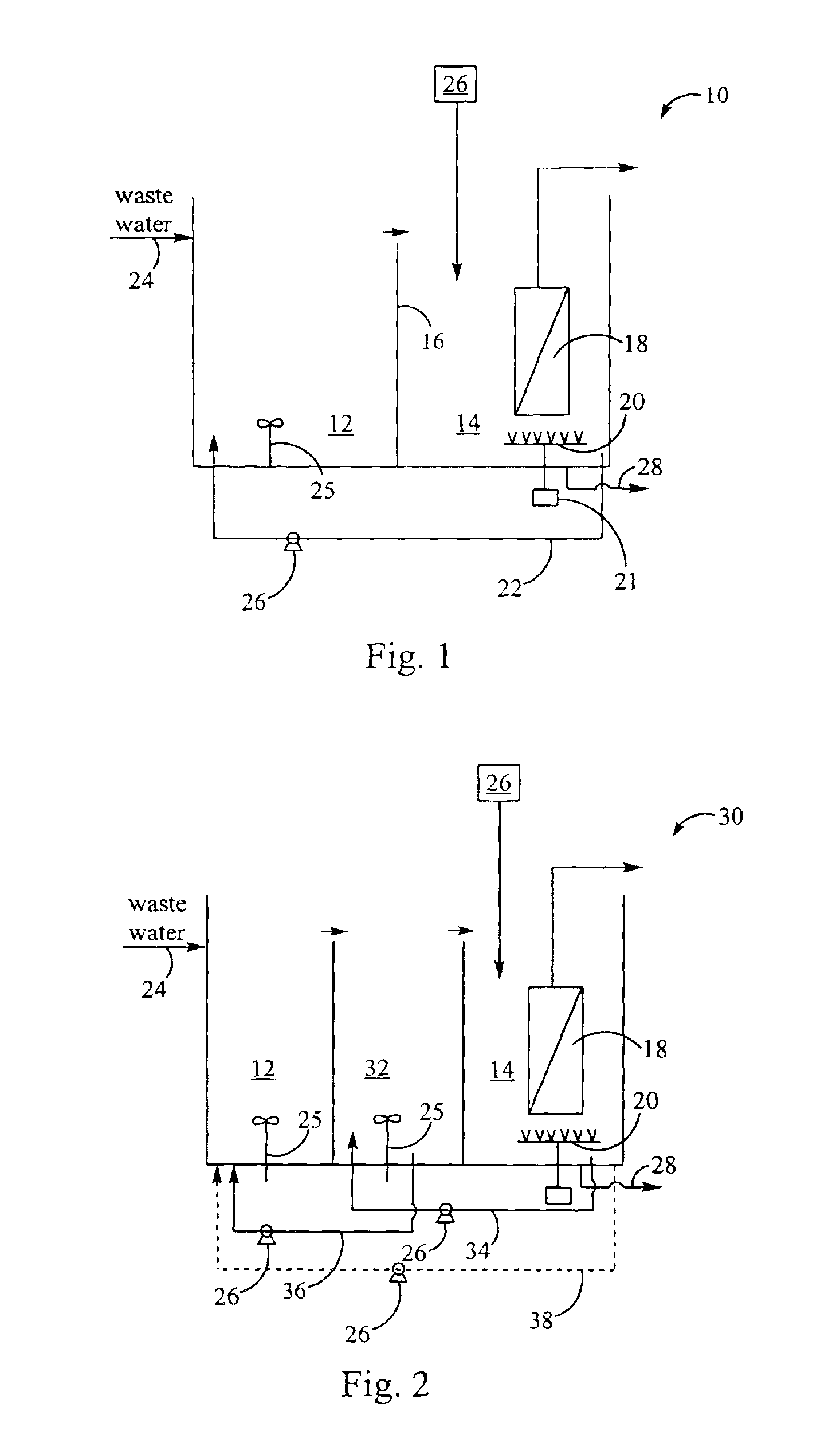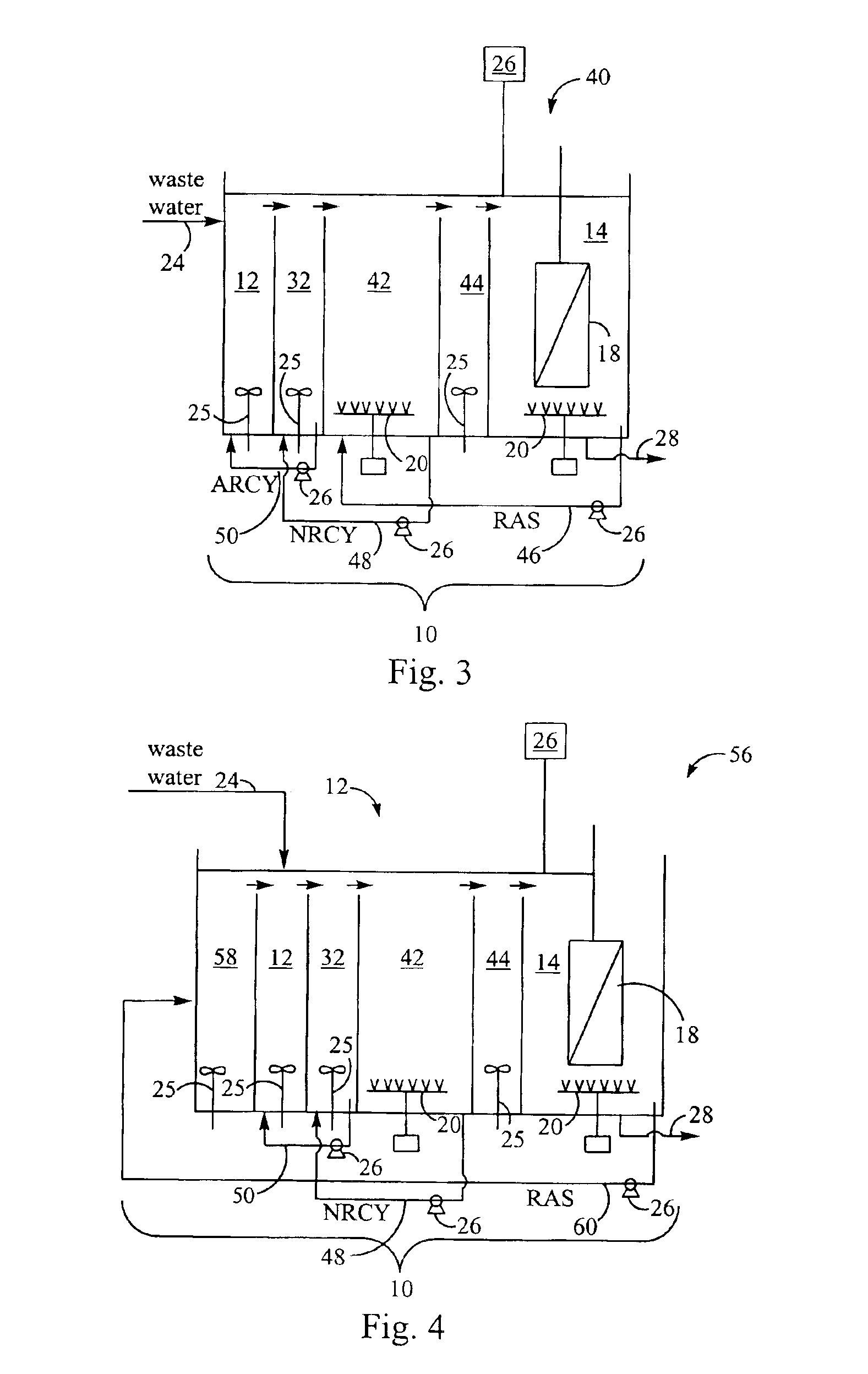Method for treating wastewater in a membrane bioreactor to produce a low phosphorus effluent
a bioreactor and wastewater technology, applied in water/sewage multi-stage treatment, other chemical processes, separation processes, etc., can solve the problems of insufficient precipitation of released phosphorous to inhibit downstream biological processes, and achieve low phosphorous output, promote robust nutrient uptake, and minimize space requirements and attendant costs
- Summary
- Abstract
- Description
- Claims
- Application Information
AI Technical Summary
Benefits of technology
Problems solved by technology
Method used
Image
Examples
example
[0020]A pilot testing program was conducted to test the nutrient removal capability of the third embodiment of the membrane bioreactor (“MBR”) and method for treating wastewater described with reference to FIG. 3 above. The pilot testing program included a number of objectives. The overall objective of the program was to determine whether the MBR could achieve the effluent limitation goals shown in Table 1.
[0021]
TABLE 1Treatment GoalsParameterTreatment GoalsBiochemical Oxygen Demand (BOD), mg / LNot applicable (NA)Total Suspended Solids (TSS), mg / L1Chemical Oxygen Demand (COD), mg / L10.0aTotal Nitrogen (TN), mg / L3.0-8.0Total Phosphorus (TP), mg / L0.1Turbidity0.5 NTU(Nephelometric Turbidity Units, NTU)Coliform (per 100 mL)aCOD limit to be achieved through the post-treatment of MBR effluent with activated carbon.
[0022]The wastewater used for the pilot testing program consisted of municipal sewage from a community. The wastewater sources were mostly domestic in nature (i.e., few industria...
PUM
| Property | Measurement | Unit |
|---|---|---|
| concentrations | aaaaa | aaaaa |
| concentration | aaaaa | aaaaa |
| effluent COD | aaaaa | aaaaa |
Abstract
Description
Claims
Application Information
 Login to View More
Login to View More - R&D
- Intellectual Property
- Life Sciences
- Materials
- Tech Scout
- Unparalleled Data Quality
- Higher Quality Content
- 60% Fewer Hallucinations
Browse by: Latest US Patents, China's latest patents, Technical Efficacy Thesaurus, Application Domain, Technology Topic, Popular Technical Reports.
© 2025 PatSnap. All rights reserved.Legal|Privacy policy|Modern Slavery Act Transparency Statement|Sitemap|About US| Contact US: help@patsnap.com



